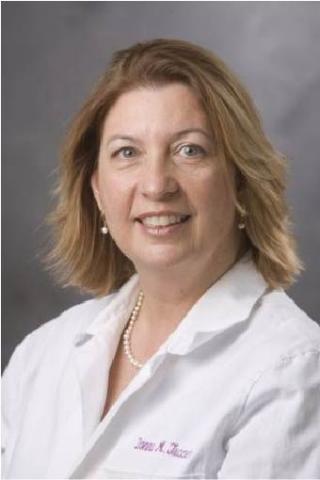Prior to starting medical school, I was in basic science research. My area was in fetal lung development, so it was no surprise that when I matriculated into medical school it was with an inner conviction that I would take my research base and expand it clinically by joining the ranks of a relatively new subspecialty: neonatology. Imagine my surprise when I reached my clinical years and discovered that I enjoyed each and every one of my rotations — except in the Neonatal ICU!
After much consideration, I settled on an OB-GYN residency. Gynecology combined both in-patient and out-patient care and had both medicine and surgery components. Obstetrics provided a fast-paced labor and delivery environment along with the medical issues of antenatal and post-partum care. Then there was the culmination of the OB experience: the delivery! What a joy to bring a new baby into the world. At the time I didn’t think about the fact that once delivered I promptly handed said infant over to the care of a pediatrician. It wasn’t until a geographic relocation and transfer to family medicine residency did I get to experience maternal-child health from a different perspective.
In family medicine, the delivery was not the end of the experience, but rather a new beginning. I was able to care for not only of the post-partum mom, but her infant, as well. This was my life and practice during residency and the early years of my career. Although I loved my position, the realities of small children, a husband who traveled for work and having no nearby extended family or support network necessitated that I change direction. It would be almost 14 years before I would take care of another pregnant woman.
The thought of returning to prenatal care when I joined the faculty at Duke Family Medicine in 2009 was intimidating. Guidelines had changed during the intervening years and new screenings and protocols had been developed. One of the most important skill sets a physician has is “knowing the sick from the not so sick.” In pregnancy this difference can be subtle and nuanced. Would I be as astute as I once was? Would my physical exams be consistent and reliable? Would my mind and hands work in concert to properly perform obstetrical procedures?
Following some dedicated refresher study, I am pleased to report that the answer to these questions is “yes.” There is something to be said for muscle memory, the act of completing a particular physical or mental task with such repetition that your body then learns to complete the task more efficiently, using less brain power. The memory, of course, is not stored in the muscle itself, but rather in the neural connections of the brain. Although this term is often used when referring to athletes and musicians, those of us in medicine utilize it extensively, as well. Repetition supports both medical knowledge and procedural acumen.
Simulation Training
One form of medical training which provides for both acquisition and repetition of motor skills is simulation training, or the use of technology to create a virtual setting through which learners can practice a complicated or critical task. A 2011 survey by the AAMC of 113 medical schools indicated that simulation training was most consistently utilized to develop psychomotor tasks, team training which included interpersonal communication skills and professional behavior, as well as the overall development of applied medical knowledge through critical thinking and decision making.
Technology does come at a price, both in terms of initial investment as well as subsequent staffing. It is not surprising, then, that multiple professionals across disciplines within the health system vie for time within the simulation center. Not all patient care training scenarios require advanced technology and a multitude of basic models and techniques are available commercially. Even some basic models however, are either not available commercially or are cost-prohibitive for a residency of our size.
Here at Duke Family Medicine Residency we have coined a phrase: “We have a model for that.” We have become quite creative at improvising and designing our own models for procedures from low-cost supplies readily available at your local grocer or hardware store. Self-designed models teach procedures as varied as extracting a foreign body from the nose to rupture of membranes on a laboring patient. We provide an extended on-boarding orientation to include these hands-on opportunities early in their residency training and then provide additional trainings on a regular basis throughout their three years with us. It is through this combination of techniques that we supplement traditional education in order to prepare our residents for situations they might encounter and prepare them to practice full spectrum family medicine.
It is encouraging to know that in family medicine, we have options. Given a discipline as broad as ours, if a physician chooses to limit providing an aspect of patient care, then our robust foundational training coupled with some personal interest and self-study can bring back the joy of more full-scope family medicine.
Donna Tuccero is associate program director of the Duke Family Medicine Residency Program. Email donna.tuccero@dm.duke.edu with questions.
Editor’s note: A member of the Duke Family Medicine Residency Program leadership team guest blogs every month. Blogs represent the opinion of the author, not the Duke Family Medicine Residency Program, the Department of Community and Family Medicine or Duke University.
